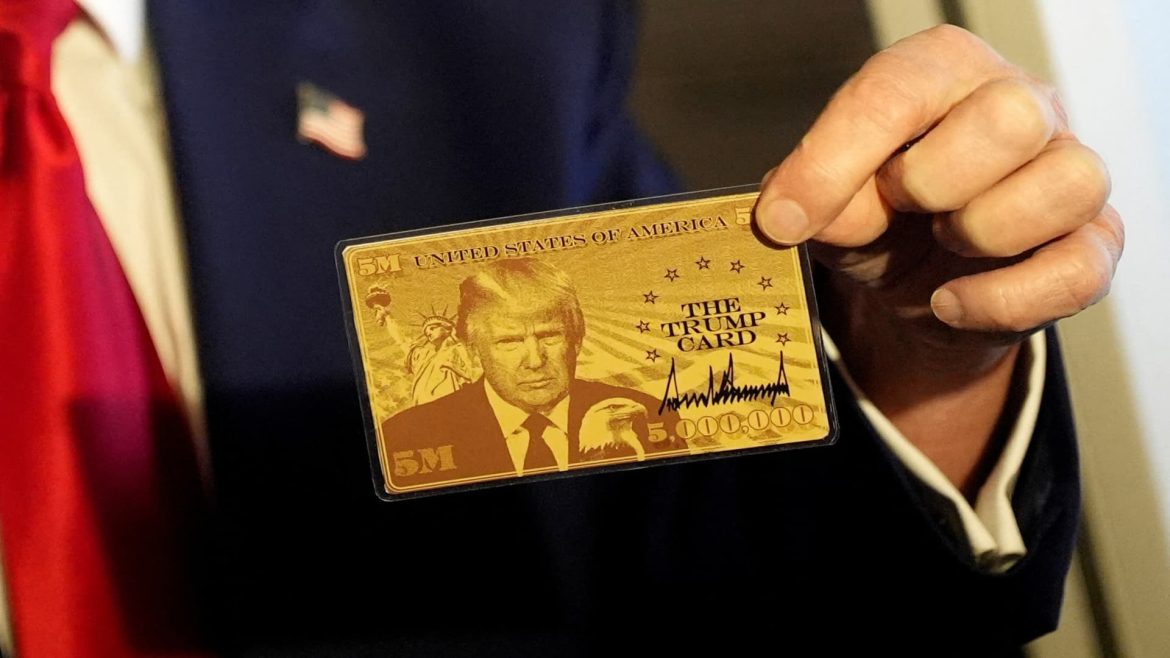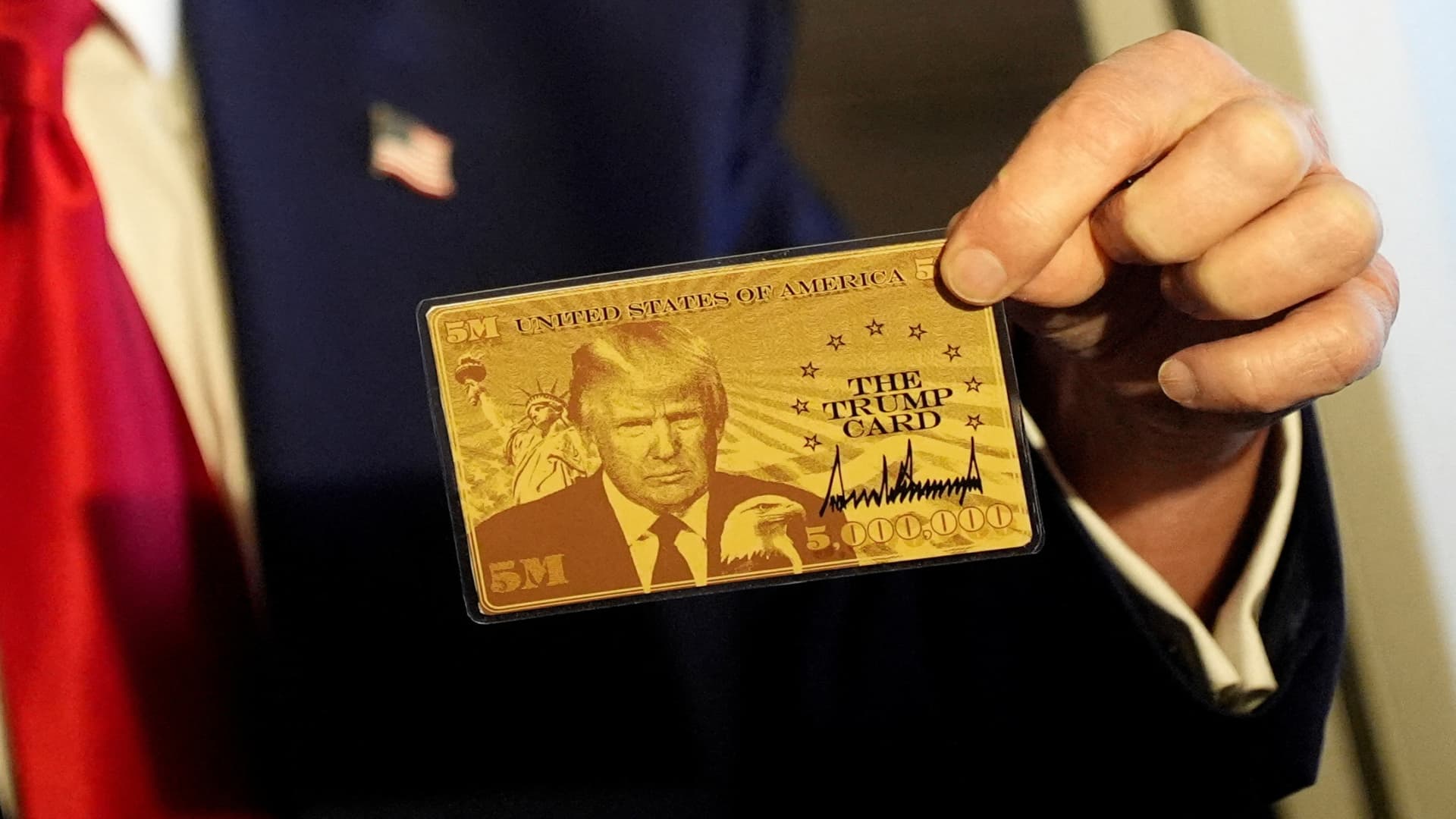The allure of the American Dream has long been a powerful magnet for immigrants from around the world. For many, the promise of opportunity, security, and prosperity has made the United States a top destination. However, the path to permanent residency in the U.S. has traditionally been a long and arduous one, filled with bureaucratic hurdles and lengthy wait times. Enter Donald Trump’s proposed $5 million “Gold Card” visa, a scheme that promises to fast-track residency for the ultra-wealthy. But is this golden ticket a genuine opportunity or merely fool’s gold?
The Promise of the Gold Card
Trump’s Gold Card visa is positioned as a premium alternative to the existing EB-5 investment visa program. The EB-5 requires a minimum investment of $800,000 and a commitment to create at least ten American jobs. In contrast, the Gold Card eliminates these requirements, offering a streamlined path to a green card—and eventually citizenship—for those willing to invest $5 million. The proposal is marketed with all the glitz and glamour one would expect from a Trump-branded initiative, complete with a golden prototype card bearing his likeness and a dedicated website, TrumpCard.gov.
The appeal is clear: for the ultra-wealthy, the Gold Card offers a shortcut to U.S. residency, bypassing the lengthy application processes and job-creation mandates of traditional visa programs. But the question remains—who is actually willing to pay this exorbitant price?
The Target Audience: Who Would Buy In?
On the surface, the global market for investment-based migration appears vast. According to recent data, approximately 2.3 million people worldwide have net assets of $5 million or more. However, this number is misleading when considering the actual pool of potential applicants. Many of these individuals are already settled in their preferred locations, and a significant portion—about one-third—are already residing in the United States.
The Gold Card is likely to attract interest from affluent families in countries like China, the Middle East, Russia, and India, where political instability, economic uncertainty, and a desire for elite education and healthcare make U.S. residency an attractive option. However, $5 million is an astronomical sum, even for the ultra-wealthy. For context, most investment migration programs globally require significantly less—Portugal’s golden visa, for example, can be obtained with a $350,000 investment, while Australia’s program requires just $1.5 million.
Initial reports suggest that tens of thousands have registered interest in the Gold Card, but experts caution that registering interest is far from committing to a $5 million investment. The high price tag, combined with the uncertainty surrounding the program’s legal viability, may deter many would-be applicants.
Legal and Political Hurdles
The most significant obstacle to the Gold Card’s implementation is its legal standing. U.S. immigration law grants Congress exclusive authority over the creation of new visa categories and permanent residency pathways. Trump’s claim that he can bypass Congress and implement the Gold Card through executive action is widely dismissed by legal experts. Any attempt to grant permanent residency outside of Congressional legislation is likely to face fierce legal challenges and could be struck down in federal court.
Moreover, the EB-5 program, which the Gold Card seeks to replace, is already mired in controversy. Critics argue that the program lacks sufficient oversight, leaving it vulnerable to fraud, money laundering, and abuse. The Gold Card’s elimination of job-creation requirements further raises concerns about its economic and social impact.
Economic and Social Implications
Even if the Gold Card were to become a reality, its economic benefits to the U.S. are uncertain. Unlike the EB-5, which—at least in theory—generates jobs and stimulates economic activity, the Gold Card requires no evidence of economic benefit beyond the initial investment. There is no guarantee that the funds will be directed toward American industries or communities, raising questions about the program’s long-term value.
Socially, the Gold Card risks exacerbating existing tensions over immigration policy. Critics argue that selling U.S. residency to the highest bidder undermines the principles of merit-based immigration and perpetuates inequality. The program’s exclusivity—reserved only for those who can afford a $5 million investment—could further alienate those who have spent years navigating the traditional immigration system.
Global Competition and Future Prospects
The U.S. is not the only country offering investment-based migration programs. Countries like Portugal, Malta, and Dubai have long attracted wealthy migrants with more affordable and streamlined options. If the Gold Card were to become a reality, it would face stiff competition from these alternatives, many of which offer additional perks, such as favorable tax regimes and easier residency requirements.
Furthermore, the political volatility surrounding U.S. immigration policy could deter potential applicants. The EB-5 program has undergone multiple revisions, leaving some applicants in limbo. A similar fate could await Gold Card holders if the program were to be abruptly altered or canceled.
Conclusion: A Gamble on the Future
Trump’s $5 million Gold Card visa is a bold and controversial proposal that taps into the enduring appeal of the American Dream. While it promises a fast track to U.S. residency for the ultra-wealthy, its legal and practical challenges are substantial. The high price tag, combined with the uncertainty surrounding its implementation, may limit its appeal to a very narrow segment of the global population.
Ultimately, the Gold Card’s success will depend on whether it can overcome its legal hurdles and prove its economic and social value. For now, it remains a speculative venture—one that may glitter with promise but could just as easily turn out to be fool’s gold.





